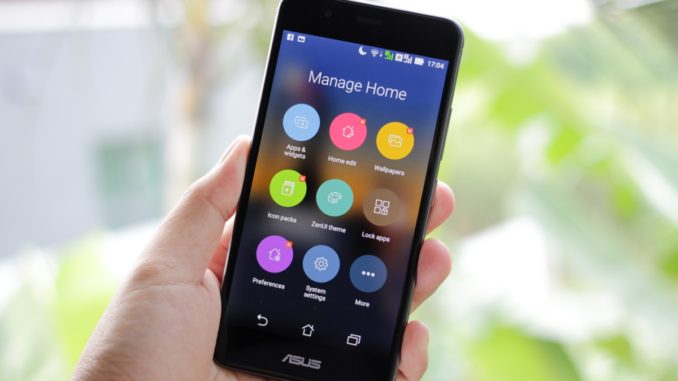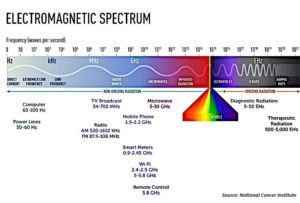
Since the 1990s, the public has been scared of the radiation emitted by microwave ovens and power lines. Riding on this fear, a widower sued the NEC Corporation in 1993 for the brain cancer that killed his wife and alleged that she held the cell phone on the same side of her head where the cancer grew.
The husband H. David Reynard lost because he failed to show scientific or medical proof that his wife’s exposure to a cell phone at such low levels caused her cancer. She began cell phone use in August 1988 and her first MRI in March 1989 already showed the appearance of a tumor. There was also no difference in her case from any other cancer patient.
Expert testimony also showed that the overall incidence of brain cancer has remained fairly constant over time and their location in the brain has also remained random.
Since then, many studies have been conducted to see if cell phone radiation causes cancer. For a summary of notable studies, see https://www.cancer.gov/about-cancer/causes-prevention/risk/radiation/cell-phones-fact-sheet#q5.
This issue is fraught with difficulties mainly because cancer is mysterious.
“No one knows the exact cause of most cases of cancer. We know that certain changes in our cells can cause cancer to start, but we don’t yet know exactly how it all happens.” (American Cancer Society)
Secondly, brain cancer is so rare. Only 1.4% occurs in the world that it is hard to find subjects to study. When subjects are located, they are asked to recall their past use of cell phones and their answers are compared to healthy subjects. There is a strong recall bias as cancer patients might have selective memory. Their cognition may also be affected by their condition. Then, some subjects die before the study is completed.
Third, cellular phone technology has changed so much in the last decade so it is hard to make a comparative study or come up with conclusive results.
Fourth, scientists cannot isolate nor accurately measure a person’s exact level of exposure to radio frequency (RF) energy since it depends on many factors like lifestyle, the environment, and the subjects’ recall of their cell phone use.
The antennas of mobile phones emit RF energy called radio waves, a form of non-ionizing radiation. Tissues nearest the antenna can absorb this energy. RF energy is a form of electromagnetic (EM) radiation, which is defined according to its wavelength and frequency (measured in hertz, Hz).
RF frequency ranges from 30 kilohertz (30 kHz, or 30,000 Hz) to 300 gigahertz (300 GHz, or 300 billion Hz). EM fields in the RF range are used for telecommunications applications, including cell phones, televisions, and radio transmissions. The human body absorbs energy from devices that emit RF EM radiation. The dose of the absorbed energy is estimated using a measure called the specific absorption rate (SAR), which is expressed in watts per kilogram of body weight. (National Cancer Institute or NCI)
The SAR for cell phone radiation is set at a maximum of 1.6 watts of energy absorbed per kilogram of body weight under strict lab conditions that do not mimic normal use. So a cell phone that complies with SAR levels is not a guaranty of safety.
“Many people mistakenly assume that using a cell phone with a lower reported SAR value necessarily decreases a user’s exposure to RF emissions, or is somehow “safer” than using a cell phone with a high SAR value. While SAR values are an important tool in judging the maximum possible exposure to RF energy from a particular model of cell phone, a single SAR value does not provide sufficient information about the amount of RF exposure under typical usage conditions to reliably compare individual cell phone models.” (FCC)
Exposure to ionizing radiation like x-rays are known to cause cancer, but there are still no consistent findings that non-ionizing radiation does. The only consistently recognized biological effect of RF energy is heating.

“The ability of microwave ovens to heat food is one example of this effect of radiofrequency energy. Radiofrequency exposure from cell phone use does cause heating to the area of the body where a cell phone or other device is held (ear, head, etc.). However, it is not sufficient to measurably increase body temperature, and there are no other clearly established effects on the body from radiofrequency energy.” (NCI)
There are other methods of collecting data and conducting experiments, but many notable ones had inconclusive findings.
Just to be on the safe side, in 2011, the International Agency for Research on Cancer (IARC), under the World Health Organization (WHO), gave the overall evaluation: “Radiofrequency electromagnetic fields are possibly carcinogenic to humans.”
“There is limited evidence in humans for the carcinogenicity of radiofrequency radiation. Positive associations have been observed between exposure to radiofrequency radiation from wireless phones and glioma, and acoustic neuroma.” (IARC)
“There was, however, a minority opinion that current evidence in humans was inadequate, therefore permitting no conclusion about a causal association.” (IARC)
“Although one cannot prove a non effect, taken together the results of the epidemiological studies, the trends over time in incidence and mortality rates for brain tumors in many different countries, experimental evidence from studies in animals, and the biophysical considerations all converge in suggesting that cell phone RF is not carcinogenic.” (Geoffrey C. Kabat, MD, Getting Risk Right: Understanding the Science of Elusive Health Risks, 2017)
What about in animals?
On May 2016, rats in the womb were subjected to cell phone radiation nine hours daily for up to two years to see if they developed tumors in the brain and heart. (US National Toxicology Program or NTP)
“These studies found low incidences of malignant gliomas in the brain and schwannomas in the heart of male rats exposed to RFR of the two types [Code Division Multiple Access (CDMA) and Global System for Mobile Communications (GSM)] currently used in U.S. wireless networks.” (NTP)
“In the brain, there was a significant, positive trend in the incidences of malignant gliomas in males exposed to CDMA” but males exposed to GSM were not statistically different from the control males. (NTP)
Does this mean that in rats cellular radiation causes brain cancer? If it did, then all rats exposed to both CDMA and GSM should have developed the malignant gliomas. Yet only the ones exposed to CDMA had a “significant, positive trend”.
Still, statistical significance is set at an arbitrary rate, so a significant result in this case “does not guarantee that it is important, or that it did not occur by chance.” ((Cornelia Dean, Making Sense of Science, 2017)
If the study seeks to prove that cellular phone radiation causes brain tumors, then why were only the males affected? “No biologically significant effects were observed in the brain or heart of female rats regardless of modulation.” (NTP)
We also need to consider if this study shows a causality or a mere correlation. Does the radiation cause tumors or do tumors appear when there is radiation? Or maybe it was just a random occurrence?
To evaluate the findings, many questions need to be answered. Like, why did unexposed rats of both genders die at twice the rate of the exposed rats? Can we interpret the results another way? Can the results be replicated? Can these results apply to humans? Further research still needs to be done.
On March 2017, in compliance with a court order, the California Department of Public Health (CDPH) released guidelines dated April 2014 on the safe use of cell phones due to the dangers of electromagnetic frequencies (EMFs). This was allegedly drafted as early as 2010 but was not released to the public.
Notice the careful and implicit wording of the guide.
“Although the chance of developing brain cancer is very small, these studies suggest that regular cellphone use increases the risk of developing some kinds of brain cancer. Some studies have also linked exposure to EMFs from cell phones to fertility problems.” (CDPH) [underline added]
Here we are 24 years after the Reynard case and the findings in it remain undisputed. Science still has not proven that cell phone radiation causes brain cancer in humans.
However, just because science cannot conclusively show a direct causality between RF radiation and brain cancer in humans does not necessarily mean there is none.
“Of course, the absence of evidence does not equal evidence of absence—the fact that we cannot see evidence of a problem does not necessarily mean there is no evidence.” (Dean)
Ways to decrease exposure
We are all exposed to radiation in daily life through our wireless devices. Cell phones have gained attention because we use it regularly close to our body where our cells can absorb more radiation.
“Your exposure to cell phone EMFs depends mostly on your distance from the phone, the strength of the EMF, and how long and how often you use the phone. The farther away the phone is from your body, the lower the exposure. Your cell phone produces stronger EMFs at the start of a call, when it is trying to connect to a cell tower, and also when only one or two bars are showing. Your phone also emits stronger EMFs when used in a moving car, bus, or train, as the phone switches connections from one cell tower to another. Finally, some phones produce stronger EMFs than others.” (CDPH)
“To reduce exposure to RF energy, use a hands-free option, such as the built-in speakerphone, the supplied headphones, or other similar accessories.” (Apple Legal)
“In children using mobile phones, the average deposition of RF energy may be two times higher in the brain and up to ten times higher in the bone marrow of the skull than in adult users.” (IARC)
In general, limit the use of wireless phones and keep it far from the body.
“These measures will generally have much more impact on RF energy absorption than the small difference in SAR between individual cell phones, which, in any event, is an unreliable comparison of RF exposure to consumers, given the variables of individual use.” (US Federal Communications Commission)
